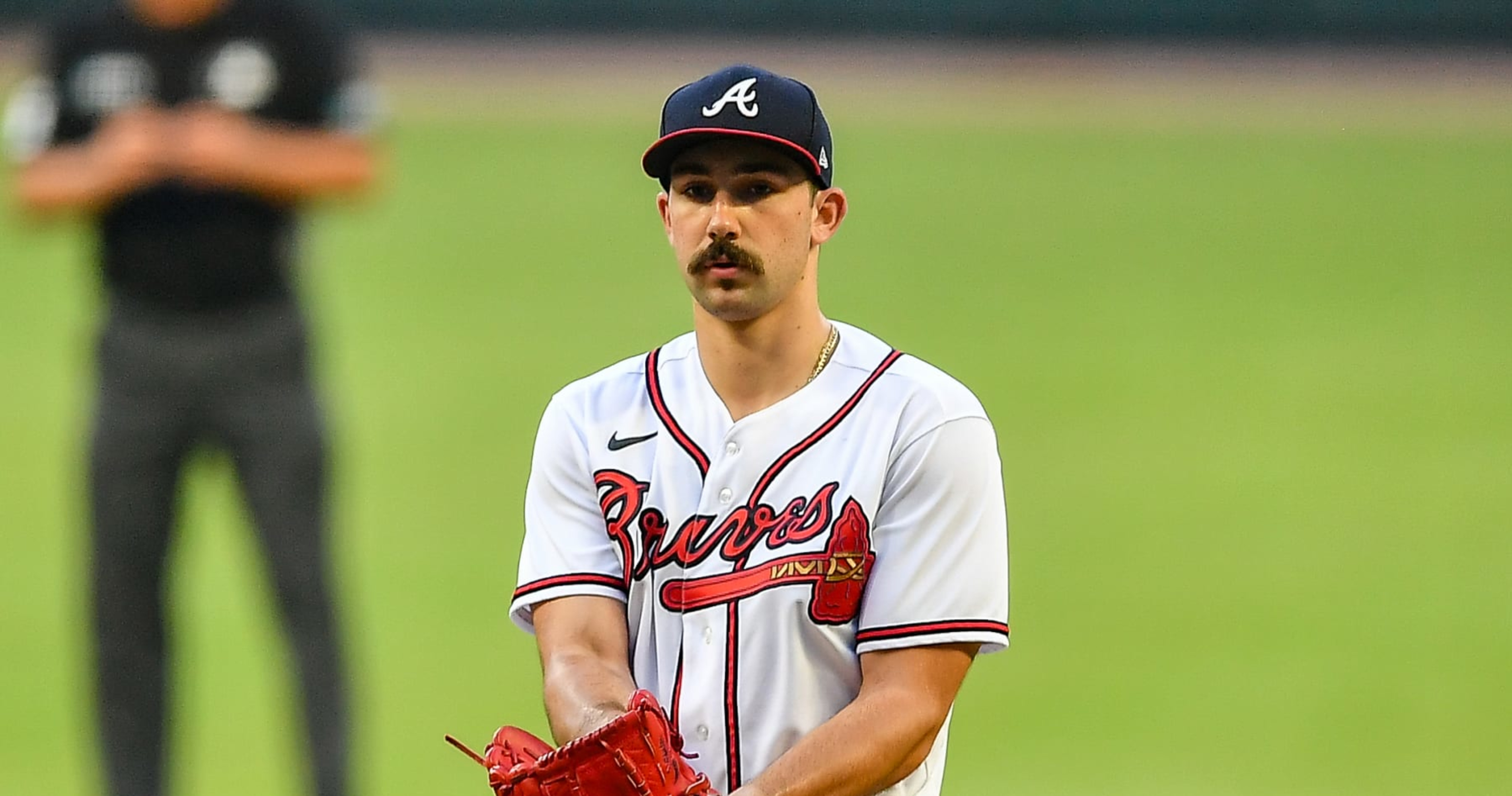Sad News: Sports Medicine Physician Describes Spencer Strider’s Operation and Outlines What Will Happen Next. The ace is expected to be away for…
Sports Medicine Surgeon Explains Spencer Strider’s Surgery and What Comes Next

The Atlanta Braves will be without MLB’s premier strikeout artist for all of 2024
The Atlanta Braves have lost strikeout artist Spencer Strider for the 2024 season, with the pitcher undergoing surgery on the damaged UCL in his throwing elbow last week.
But there’s a bit of news in Atlanta’s announcement – Strider received an “internal brace” for his revision in lieu of the standard UCL repair process. To understand more about what this means for Strider and how the internal brace surgery is different from the standard “Tommy John” UCL reconstruction, Braves Today reached out to the New York-based Hospital for Special Surgery to talk to an expert about the situation.
And one of the biggest takeaways from our chat with Theodore A. Blaine, MD, a sports medicine surgeon at HSS, is just how complicated a second surgery is on a pitcher’s throwing elbow – there’s no easy template for what to do, with each situation being uniquely different.
“The decision to perform a UCL reconstruction (“Tommy John” surgery) or a UCL repair (with or without an internal brace) or both is based on many factors,” Blaine told us, with “each of these […] weighed to determine the best options for each individual.” It’s a significant list of factors, as well: “The age of the player, the location of the injury to the UCL, the desired activity level of the athlete moving forward, the quality of the tissue, and any prior elbow injury history are all factors that must be considered.”
But the use of the internal brace for Strider is significant – while the literature isn’t quite settled just yet, there’s belief that the internal brace’s presence can help mitigate future damage to the joint. “At the professional level, we are still assessing the outcomes and durability of UCL repairs and UCL reconstructions with the addition of an internal brace. Biomechanical studies, however, have shown increased strength and lower load to failure when the internal brace is used to augment the UCL reconstruction.”
The internal brace has become quite common at lower levels, with high school and college players being able to return “in about half the time than patients who have a (traditional) reconstruction.”
The traditional reconstruction, as we described in our initial story on Strider’s surgery, involves a donor tendon, typically from either the patient’s forearm or a cadaver, that is woven into the joint in lieu of the damaged UCL. The internal brace, by contrast, is a tape-like suture that is anchored into the humerus (the upper bone of the arm) and ulna (the forearm), which remains in place after the athlete returns to play.
There are several risk factors to a second surgery, Blaine explained, including “the way the initial surgery was performed, (which could) affect the options available for revision surgery. Even if well performed, there can be scar tissue that may complicate the surgical approach, and there may be bone loss on either the ulna or humerus or both that may limit options for placement of the new graft.”
And even the choice of graft can change things, with the preference being a forearm tendon – called a “palmaris tendon autograft”, per Blaine, – but hamstring tendons are sometimes used, which can require changes to the rehabilitation program after surgery.
The two biggest takeaways from Dr. Blaine were the increased risk that comes with a second revision and how to prevent or reduce the need for these surgeries in the first place.
Regarding a second repair, typically referred to as a revision, return to play has been less common, per Blaine, with the figures he gave us being “from 65% to 78% in some studies”. A primary UCL reconstruction – the athlete’s first repair procedure – has a reported 84-95% return-to-play rate, by contrast, mainly due to those complicating factors mentioned above.
But how to stop it from happening? Unfortunately, there’s not much that can be done solely at the major league level to prevent the rash of UCL injuries, per Blaine: “UCL is an overuse injury and prevention should begin early in an athlete’s career (little league baseball) with appropriate pitch counts, off days, and breaks from pitching. Players should receive adequate pre- and post-game care to reduce the risk of injury and allow the player to perform at their best level for the longest time. […] These rules should be followed carefully to protect the health of young throwers.” He did explain, however, that “even at the Major League level, similar rules should be applied.”
There are additional measures that can be put in place for players that are either at high risk for UCL injuries or are coming off prior UCL reconstruction, per Blaine, including “limiting (the) number of pitches by pitch count (and) reducing the number of fastball pitches thrown by players both before and after UCL surgery”, as well as moving players from starting to relief roles to increase longevity in the position.
Braves fans have some experience with the idea of converting a starter to a reliever due to injury, as Hall of Fame pitcher John Smoltz made that exact move after his 2000 Tommy John surgery. It was a success, too, with Smoltz leading all of baseball with 55 saves and finishing third in Cy Young voting in 2002 as a reliever before returning to the rotation for the 2005 season. He is the first pitcher to have had Tommy John surgery and be inducted into the National Baseball Hall of Fame, as well as becoming the only pitcher in MLB history to both win over 200 games and record 150 saves, finishing with 213 wins and 154 saves.



